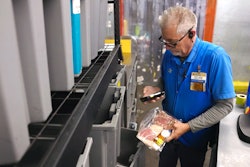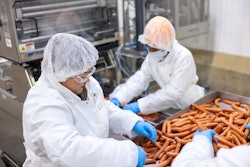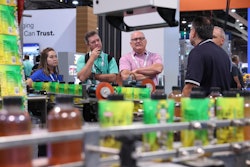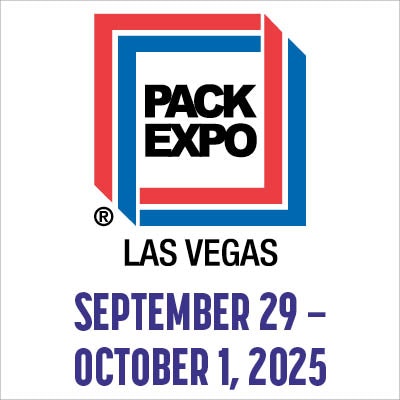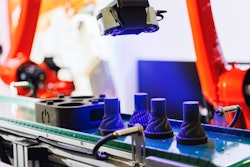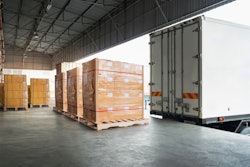Welcome back to Package This, your video guide to packaging machinery.
Today, we look at cartoning equipment—the machines that fold, fill, and seal the paperboard boxes behind your favorite products.
These machines all start with a flat paperboard or chipboard “blank” that later gets formed, filled, and sealed to hold products from snacks to coffee capsules and then onto store shelves.
Let’s check out six distinct types of cartoners—and the tech that powers them.
Carton Erector/Former
Here we see an integrated top load cartoner from Syntegon. The core of Syntegon’s TTMD consists of a top load cartoner component for forming and closing, combined with seamlessly integrated Delta robot cells for product loading. The robotic solution's camera-based vision system detects the position of the individual products on the infeed belt.
Delta robots pick single or multiple products arriving in random order and place them in cartons or trays, according to specifications, over the wide opening. Here you can see the machine packing wrapped taco shells into a lock-style tri-seal carton.
Glue is applied to the cover flaps as the cartons move into position for closing. The closer then presses down the flaps to seal the carton before moving it to the outfeed conveyor.
Horizontal Cartoner
Now let’s go in the other direction—horizontal. Horizontal cartoners load products by pushing them into cartons lying flat on their side.
Rychiger’s NHC Cartoners are built for versatility, handling a wide range of horizontally loaded products—from frozen foods and snacks to pouches and single-serve capsules.
In this example, you’ll see Nespresso-style capsules being nested into a 1X10 pack pattern, before being gently side-loaded into cartons. This ensures accurate orientation and product protection.
Optimized for coffee applications, the NHC delivers high-speed, reliable performance with minimal downtime and fast changeovers. It features integrated capsule counting, load verification, and handles a variety of carton sizes—including multi-flavor variety packs.
Optional modules support labeling, tamper-evident sealing, printing, and more. And with its compact footprint and seamless integration with upstream equipment, the NHC is a smart, scalable solution for efficient capsule packaging.
Top Load Cartoner
Top load cartoners open cartons from above, loading product vertically into hinged-flap styles like trays, cake boxes, or tuck tops.
R.A Jones’ Celestion MTX is a flexible, high-speed solution that runs both paperboard and corrugated cartons. It supports multiple formats from flat blanks and is ideal for flow-wrapped products—think energy bars, candy, granola, or even pouches and odd-shaped items.
It handles up to 800 products per minute, with carton loading rates up to 150 cartons per minute. That’s serious throughput.
Changeovers are a breeze. With fewer change parts, reduced downtime, and Acc-U-Change Plus push-button changeover, switching between product types or carton sizes is fast and operator-friendly.
Its modular design also allows expansion or customization to meet specific application needs—whether you’re running single-serve packs or promotional multipacks.
Vertical cartoners
Similar to top-load systems, vertical cartoners also rely on gravity. These machines typically load products from above using robotic systems. They’re a smart choice for cylindrical or upright products like bottles, jars, or stick packs.
Carton Sealer
Next up, we have carton sealing—the final step that locks it all in.
Check out the Spartan Cartoner from Econocorp. It’s a compact, flexible machine that automates erecting, loading, and closing cartons. It handles both paperboard and corrugated materials and works across multiple industries, from food to household products.
Spartan supports tuck or glue closures and accommodates a wide range of product types and carton sizes. It’s especially well-suited for mid-speed production lines looking to scale without investing in overly complex automation.
Its simplicity and durability make it a favorite for companies looking for an entry-level automated cartoning solution—without sacrificing performance.
Sleevers
A unique type of cartoning equipment worth mentioning before we end is sleevers. These machines wrap a printed or plain sleeve—usually paperboard—around a primary package like a ready meal tray or multipack. They’re fast, clean, and great for retail presentation.
And that’s a wrap on today’s look at cartoning equipment! Whether you're sealing taco shells, loading coffee capsules, or switching formats on the fly, there’s a cartoner built for your product—and your goals.
For more videos on packaging equipment and materials, subscribe to Packaging World’s YouTube channel to catch the entire Package This series.
And if you’re shopping for cartoners or any other type of packaging equipment, check out PMMI ProSource at ProSource.org — a searchable directory with over 1,000 packaging and processing suppliers.
Thanks, and until next time — keep on packaging!







